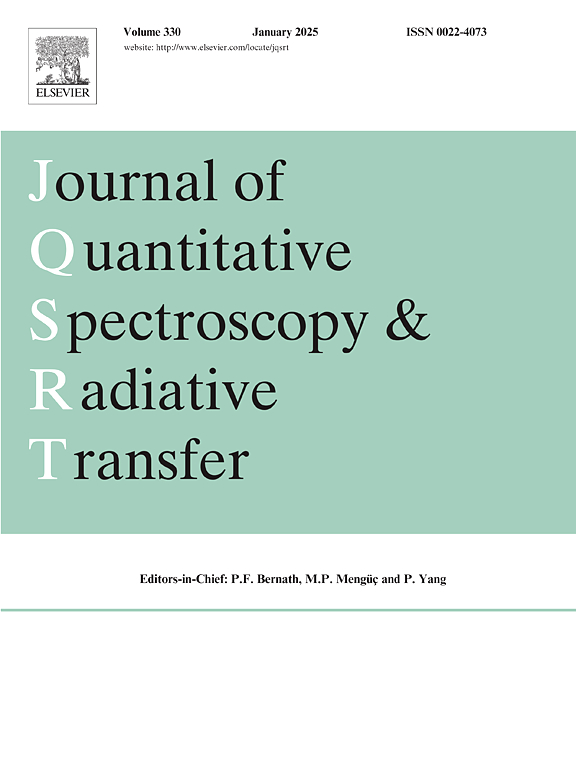Effect of charged sand grains in strong sandstorms on microwave radar range
IF 2.3
3区 物理与天体物理
Q2 OPTICS
Journal of Quantitative Spectroscopy & Radiative Transfer
Pub Date : 2025-04-09
DOI:10.1016/j.jqsrt.2025.109468
引用次数: 0
Abstract
In this paper, the range of low-frequency microwave radar going through sand storms is numerically investigated with considering the attenuation and backscattering of charged sand grains along the link. It was found that strong sandstorms can reduce the range of microwave radar, which is reduced by < 5 % for radars at the L and S bands when the visibility is larger than 50 m; while with the visibility of 10 m, the radar range at the L(1.215G Hz), S(3 GHz), and X(10 GHz) bands is reduced by 27.69 %, 31.90 % and 89.69 %. The charges carried by sand grains increase the reduction. Due to the scattering of radar waves by sand grains along the link, the signal-to-noise ratio (SNR) will decrease with the radar detection distance. Near the radar system, SNR decreases rapidly due to the strong attenuation of sand storms, which will cause a detection blind zone near the radar systems, which is related to the visibility, the RCS, and radar frequency. Charges carried on sand grains reduce the SNR to expand the blind zone in sandstorms. Given the target, it is necessary to increase the radar frequency or reduce the minimum detectable SNR of a radar system to avoid the detection blind zone near the radar.
强沙尘暴中带电沙粒对微波雷达距离的影响
本文对低频微波雷达穿越沙尘暴的范围进行了数值研究,同时考虑了线路上带电沙粒的衰减和后向散射。结果表明,强沙尘暴会使微波雷达的探测距离减小,减小幅度为<;能见度大于50 m时,L、S波段雷达5%;当能见度为10 m时,雷达在L(1.215G Hz)、S(3 GHz)和X(10 GHz)频段的距离分别减少27.69%、31.90%和89.69%。砂粒携带的电荷增加了还原。由于雷达波被沙粒沿链路散射,信噪比会随着雷达探测距离的增加而降低。在雷达系统附近,由于沙尘暴的强烈衰减,信噪比迅速下降,会在雷达系统附近形成探测盲区,这与能见度、RCS和雷达频率有关。沙粒携带的电荷降低了信噪比,扩大了沙尘暴的盲区。在给定目标的情况下,有必要提高雷达频率或降低雷达系统的最小可探测信噪比,以避免雷达附近的探测盲区。
本文章由计算机程序翻译,如有差异,请以英文原文为准。
求助全文
约1分钟内获得全文
求助全文
来源期刊
CiteScore
5.30
自引率
21.70%
发文量
273
审稿时长
58 days
期刊介绍:
Papers with the following subject areas are suitable for publication in the Journal of Quantitative Spectroscopy and Radiative Transfer:
- Theoretical and experimental aspects of the spectra of atoms, molecules, ions, and plasmas.
- Spectral lineshape studies including models and computational algorithms.
- Atmospheric spectroscopy.
- Theoretical and experimental aspects of light scattering.
- Application of light scattering in particle characterization and remote sensing.
- Application of light scattering in biological sciences and medicine.
- Radiative transfer in absorbing, emitting, and scattering media.
- Radiative transfer in stochastic media.

 求助内容:
求助内容: 应助结果提醒方式:
应助结果提醒方式:


